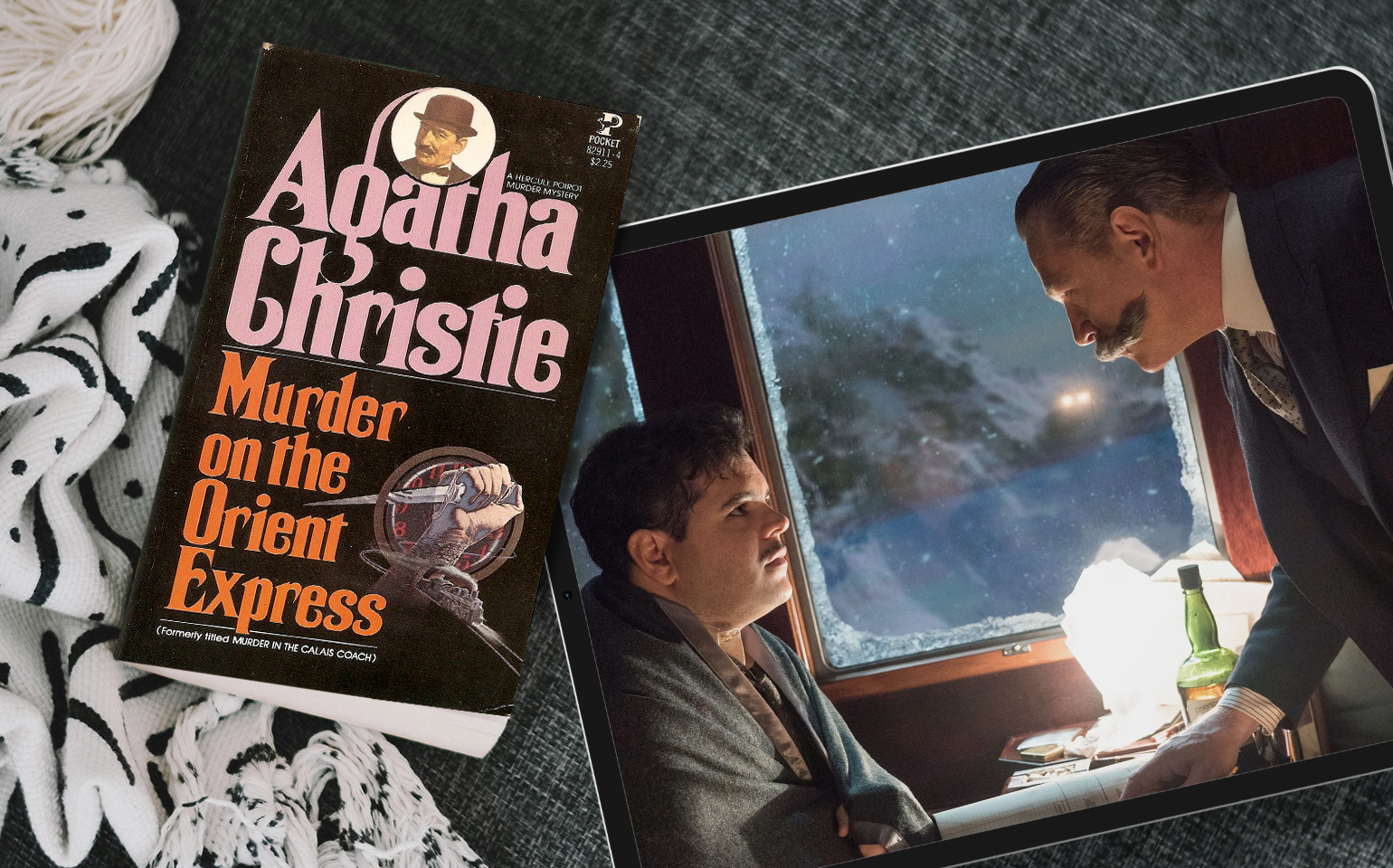
Book vs. Movie: Murder on the Orient Express
Read With Caution: this blog post contains spoilers for Murder on the Orient Express.
The impossible could not have happened, therefore the impossible must be possible in spite of appearances. (Hercule Poirot, page 98)
Author and playwright Agatha Christie is known as the “Queen of Mystery.” Her best-selling books, such as Murder on the Orient Express, And Then There Were None, and The Murder of Roger Ackroyd set records that have yet to be surpassed. Published in 1934, Murder on the Orient Express has been adapted into a TV series, a play, a graphic novel, and multiple movies. Among these various adaptations, Kenneth Branagh’s Murder on the Orient Express (2017) is the movie that I have chosen to compare to the book.
Detective Hercule Poirot is traveling aboard the famous Orient Express when, just after midnight, a snowstorm causes the train to stop in its tracks. By morning, millionaire Samuel Edward Ratchett is found dead in his locked compartment. One of his fellow passengers must be the murderer, but who would commit such a crime? Isolated by the storm, Poirot must find the murderer among a dozen of the dead man’s enemies before the killer decides to strike again.
When I had to read Murder on the Orient Express for school, I already knew the ending. This is because I had watched the movie about a year earlier. Then after finishing the book with my literature circle, I decided to re-watch the movie. This made me realize that the movie varied slightly from the book. Both versions were good, but which was better?
The Book:
Published 90 years ago, Murder on the Orient Express continues to be a staple in detective fiction. Agatha Christie crafted a perfect mystery, solvable for those who paid attention to every detail. Red herrings, like the lady in the scarlet kimono, were strategically placed to keep the reader guessing the entire time. The premise itself is clever: thirteen suspects, a dead man, and a famed detective trapped on a train with nothing but snow surrounding them. Twelve of the passengers wanted revenge on Samuel Ratchett, the murderer of young Daisy Armstrong. The passengers provided an alibi for one another, so that the blame could not be placed on any of them. Poirot foiled their plan, as he cleverly figured out what happened.
Murder on the Orient Express was written in the format where each chapter was the interrogation of one suspect, or something along the lines of the investigation, like inspecting the crime scene or searching the passengers’ rooms. This resulted in the book being dull most of the time. If I had not read it for school, I certainly would have taken longer to finish it. This is excluding the last chapter, as it was interesting to see Poirot explain his process and how he reached his conclusions. Although I enjoyed reading the last chapter, I feel as though the ending was rushed. The book simply ended with Poirot, the train director, and the doctor choosing to lie to protect the real murderers (the other twelve passengers).
I feel like a more satisfying resolution would be the police arriving on scene and speaking to Poirot about the murder, as was done in the movie. Or an epilogue could show one of the murderers, and how they have moved on from their grief.
All in all, the book Murder on the Orient Express had a great premise, but much of the novel lacked action. Although, the plot and overall themes of the book still make it worth reading, especially for fans of Agatha Christie’s other works.
The Movie:
Any movie that was adapted from a book has changes, whether the changes are for the better, or for worse. By nature of the format, the movie had better pace than its counterpart. In addition, the director Kenneth Branagh took creative liberties when adapting the book. The most notable changes were seen in character names, the action scenes added, and a murderer reveal scene that ended with a bang. However, the premise, themes, and key ideas stayed the same. All things considered, this version of Murder on the Orient Express was a surprisingly faithful adaptation of the classic book.
Agatha Christie’s ending felt rushed and lacked emotional closer. Fortunately, Kenneth Branagh corrected these issues in his adaption. This is seen after Poirot revealed the murderer. Branagh added an extra component to the murder reveal scene that showed that the people that killed Ratchett are not truly murderers; they only committed the crime to get justice for Daisy. Furthermore, the director chose to have Michelle Pfeiffer’s Never Forget play in the background during the credit scene. This simple song gave emotional closure for the viewer, something that Christie failed to provide, in my opinion.
This adaptation of Agatha Christie’s classic book is perfect for new and old fans alike, and it is a great entry point into detective fiction movies.
Overall Thoughts:
In writing this review and using my “little grey cells,” I realized that everyone should experience both versions of Murder on the Orient Express to properly chose which is better. The book is good for anybody who likes a slower detective novel with more interrogating and less action. Kenneth Branagh’s version is better for those that want to watch a faithful, yet faster-paced version of Agatha Christie’s classic book. Both the book and the movie have their strengths and their weaknesses; unfortunately, the cons outweigh the pros for the book. I usually agree with the saying, “The book was better,” however in this scenario, I believe that the movie is superior to the book.



